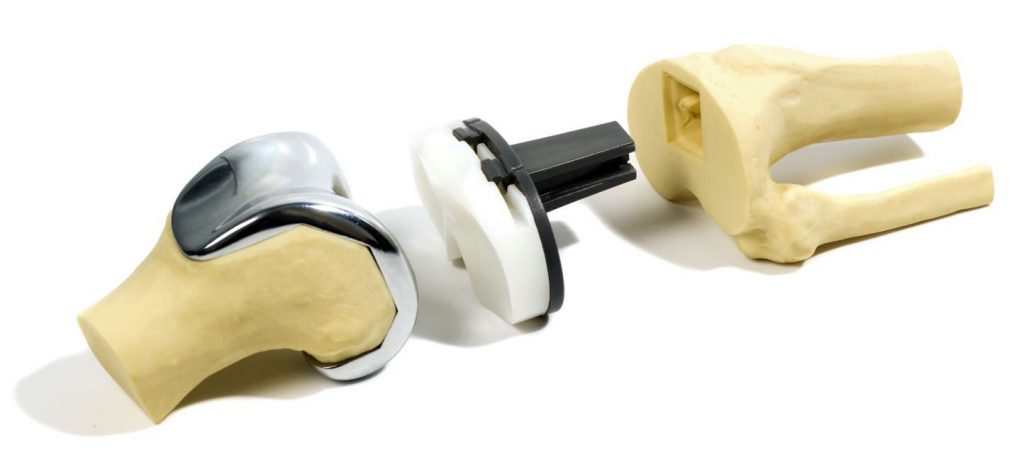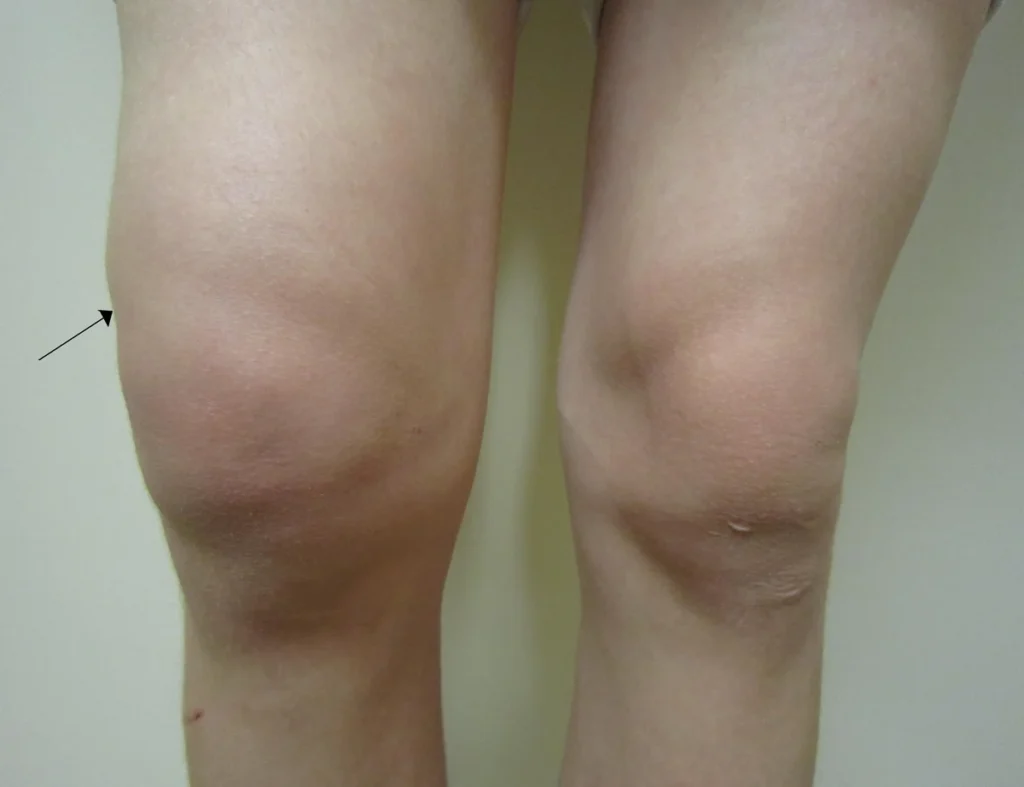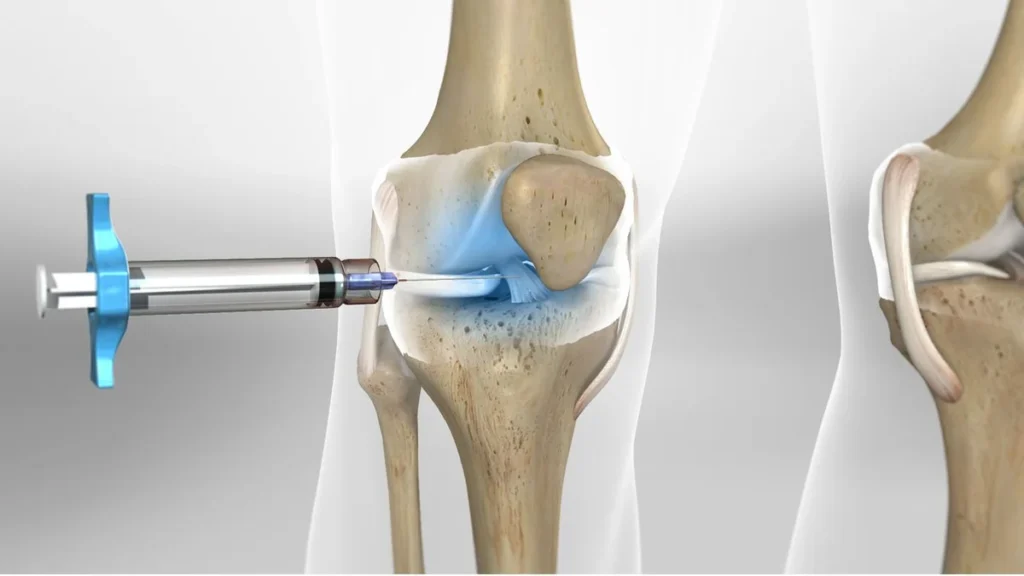Knee Joint Replacement: In today’s world, with changes in lifestyle, medical problems, and diseases have also evolved. The knee joint is a complex part of the body that is vulnerable due to its location. Pain and discomfort in this area have increased in recent years. However, with scientific advancements, knee joint replacement is possible, which helps alleviate pain.

- What Does Knee Joint Replacement Mean?
- Who Needs a Knee Joint Replacement?
- What is the Goal of This Procedure?
- Why is Knee Joint Replacement Needed?
- What Causes Damage to Cartilage and Bone Wear?
- Procedure for Knee Joint Replacement Surgery
- Is the Outcome of the Surgery Permanent?
- Types of Prostheses in Knee Joint Replacement Surgery
- Age Consideration for Surgery
- Possible Complications of Knee Joint Replacement Surgery
- Postoperative Care for Knee Joint Replacement
- Recovery Period After Surgery
- Duration of Treatment and Recovery After Surgery
- Pain After Knee Joint Replacement Surgery
- Duration of Hip Joint Replacement Surgery
- Limping After Hip Joint Replacement Surgery
- Knee Joint Replacement Surgery Using Laser
- Alternatives to Knee Joint Replacement Surgery
- Exercise and Physiotherapy After Surgery
- Choosing the Best Surgeon for Knee Joint Replacement in Tehran
- Consultation Recommendation Before Deciding on Surgery
- Cost of Knee Joint Replacement Surgery
What Does Knee Joint Replacement Mean?
Flexible cartilages at the end of bones facilitate the smooth movement of the joint. Sometimes, these cartilages get damaged and cause pain. In such cases, orthopedic surgeons can replace the knee joint to make movement easier for the patient.
Who Needs a Knee Joint Replacement?
Knee joint replacement is one of the successful medical procedures. Initially, doctors try to treat it with non-surgical treatments like physiotherapy or medication. If these methods are ineffective, joint replacement surgery becomes necessary. If someone consistently experiences knee pain, even when resting, or if knee movement is limited, knee joint replacement surgery is required.
What is the Goal of This Procedure?
When the knee joint wears out, the bones get closer, making knee movement difficult. This surgery helps reduce pain and allows the patient to move more comfortably and perform daily activities.
Why is Knee Joint Replacement Needed?
Knee joint replacement is needed when the knee joint cartilage is worn out or damaged, and inflammation has occurred, and non-surgical treatments like physiotherapy, specific exercises, and oral medications have failed to improve the condition. In such cases, an orthopedic specialist performs surgery using artificial prostheses, which helps improve the patient’s condition and completely eliminates knee pain after the recovery period.
What Causes Damage to Cartilage and Bone Wear?
- Injury and Damage to the Knee: The knee joint can be damaged due to sudden incidents such as car accidents.
- Rheumatoid Arthritis: An autoimmune disease where the body’s immune system attacks the joint lining tissues, causing inflammation.
- Osteoarthritis: This disease occurs when cartilages are worn out, and bones rub against each other, leading to severe pain and inflammation.
- Osteoporosis: Over time and with aging, bones become weak and vulnerable, which can lead to serious injuries and ultimately necessitate knee joint replacement.
In such cases, knee joint replacement can help alleviate pain and improve the quality of life for patients.
Procedure for Knee Joint Replacement Surgery
Knee joint replacement surgery is an effective method for treating pain and discomfort in the knee joint. When performed correctly, it can restore patients to normal life. The surgical procedure involves the following steps:
Anesthesia: Depending on the doctor’s assessment, either general or local anesthesia is administered.
Access to the Joint: The surgeon creates a small incision in the knee area to access the bones and internal regions.
Removal of Damaged Areas: Damaged cartilage and joint surfaces of the bones are removed using specialized surgical tools.
Prosthesis Installation: The doctor installs prostheses and implants tailored to the patient’s condition in the damaged joint area.
Implant Stabilization: The implants, made of metal and plastic materials, are attached to the bones using bone cement or biological methods.
Is the Outcome of the Surgery Permanent?
Knee joint replacement significantly improves the patient’s condition. However, to ensure the longevity of the prosthesis and optimal results, the following should be considered:
- Choosing an experienced and specialist surgeon for the procedure
- Pre-surgical physiotherapy to strengthen muscles
- Attention to surgical techniques and the surgeon’s expertise
- Choosing the appropriate type of prosthesis and checking its quality
- Adhering to necessary postoperative care, including physiotherapy and exercise
- Continuous care of the prosthesis, including sitting posture and avoiding excessive pressure on the knee
With these considerations, a longer-lasting prosthesis and a more satisfactory outcome from the surgery can be achieved.
Types of Prostheses in Knee Joint Replacement Surgery
Knee joint replacement surgery is performed using artificial prostheses. The doctor selects the appropriate type of prosthesis based on the patient’s condition, such as age, weight, health status, and the extent of joint damage. Prostheses are categorized based on the material they are made from:
- Ceramic on plastic
- Ceramic on ceramic
- Metal on plastic
- Metal on metal
Each prosthesis consists of three main parts:
- Femoral component: Related to the thigh bone
- Tibial component: Related to the shin bone
- Patellar component: Related to the kneecap
Different surgical methods for knee joint replacement are performed based on the condition of the damaged joint and different areas of the knee. The surgery can be partial or total:
- Partial Surgery: Depending on the health of the ligaments and the extent of damage to different parts of the knee, suitable for different ages
- Total Surgery: Involves complete replacement of the surface parts of the bones or replacement of the underside of the knee cup
Age Consideration for Surgery
The age of the patient plays an important role in the decision to undergo surgery. Most surgeons do not recommend knee joint replacement surgery for people under 50 years old. However, the final decision depends on the individual patient’s condition, the extent of pain, and activity limitations caused by knee joint problems.
Is It Possible to Perform Bow-legged or Knock-Kneed Correction Simultaneously with Knee Joint Replacement Surgery?
Yes, performing these two procedures simultaneously is possible, and in these cases, the skill and experience of the surgeon are very important. Dr. Nader Motalebizadeh has extensive experience in this field and has successfully performed numerous simultaneous knee joint replacements and bow-legged or knock-kneed correction surgeries.
Is It Necessary to Visit a Dentist Before Knee Joint Replacement Surgery?
Yes, ensuring dental health before surgery is essential to prevent the transmission of infection to the surgical site.
Possible Complications of Knee Joint Replacement Surgery
Despite being less risky compared to other surgeries, there are potential complications. The selection of an appropriate prosthesis and correct surgical technique can reduce these risks:
- Superficial infections are treatable with antibiotics and hygiene.
- Deep infections that may require further surgery.
- Damage to surrounding bones during surgery.
- Pain due to prosthesis incompatibility.
- Loosening or displacement of the prosthesis, which may need repair.
- Blood clots are treatable with medication.
- Limited movement in the artificial joint.
- Damage to surrounding vessels and nerves.
- Differences in leg lengths.
Benefits of Knee Joint Replacement Surgery
The primary benefit of this surgery is the relief of severe pain. Other significant advantages include improved physical activity and a return to daily life, which help enhance the patient’s morale and satisfaction.
Postoperative Care for Knee Joint Replacement
After knee joint replacement surgery, several important practices are necessary for quick and effective recovery:
- Timely consumption of prescribed medications, including painkillers, antibiotics, and blood clot prevention drugs.
- Use of supplements like vitamins and iron pills as advised by the doctor.
- Keeping the wound dry and avoiding contact with water during showers.
- Avoiding stairs for the first few months.
- Returning to work should be based on the doctor’s recommendation, usually at least two months after surgery.
- Regularly performing recommended home exercises.
- Consistent attendance in physiotherapy sessions.
- Eating a nutritious diet and incorporating a variety of fruits and vegetables.
- Adjusting chair height to be higher than usual.
- Maintaining hygiene and care of the surgical site.
- Being mindful of walking, sitting, and sleeping postures.
- Gradually increasing indoor walking.
- Started to drive following the doctor’s advice.
- Careful and timely changing of bandages.

To make an appointment or get an online consultation with Dr. Nader Motallebi Zadeh, Limb lengthening surgeon, proceed here.
Recovery Period After Surgery
The patient should rest during the recovery period and avoid heavy activities. However, the recovery time varies for each individual. With the doctor’s approval, the patient can return to daily activities after 4 to 6 weeks. During this period, attention should be paid to the following:
- Using a walker or cane while walking.
- Avoiding pressure on the knee while standing up.
- Preventing pressure on the knee in a sleeping position.
- Avoiding dangling legs while sitting.
- Not using stairs.
Duration of Treatment and Recovery After Surgery
Approximately 98% of patients can return to their professional activities after one month, although this depends on the nature of the job and individual’s activities.
Pain After Knee Joint Replacement Surgery
After knee joint replacement surgery, experiencing pain is natural and tends to decrease over time and during the recovery period. In some cases, patients may experience swelling, fever, and redness at the surgical site, which can increase pain. In such instances, immediate consultation with a doctor is necessary to take appropriate measures.
Duration of Hip Joint Replacement Surgery
Hip joint replacement surgery usually takes between one to three hours. After surgery, special tubes are placed at the surgical site to drain excess blood.
Is Swelling of the Leg Normal After Hip Joint Replacement Surgery?
Swelling of the calf can be a sign of blood clotting in the leg veins, a serious complication after hip joint replacement surgery. Blood clots can become dangerous if they detach from their original location and travel to the heart and then to the pulmonary arteries, known as pulmonary embolism.
This can lead to the blockage of pulmonary capillaries and disruption in pulmonary cardiac hemodynamics and, in severe cases, can result in the patient’s death. Therefore, swelling in the calf should be taken seriously and consulted with a doctor if necessary.
Limping After Hip Joint Replacement Surgery
Pain and deterioration of the hip joint can lead to limping. The patient, due to pain, tries to apply less pressure on the affected leg, which leads to limping. With hip joint replacement surgery, pain is significantly reduced.
Knee Joint Replacement Surgery Using Laser
The use of laser in knee joint replacement surgery helps reduce patient pain. The laser works with high precision and causes less damage to surrounding tissues. This technique also helps preserve the patient’s natural joint and allows for the use of modern techniques such as stem cells.
Alternatives to Knee Joint Replacement Surgery
In some cases, due to the severity of knee joint deterioration, knee joint replacement surgery may be necessary. Where non-surgical treatments are insufficient, intra-articular injections can be a suitable option. Hyaluronic acid injections help improve knee function but may have side effects like allergies, swelling, and pain. Cortisone injections are also a temporary treatment for reducing pain and inflammation.
Exercise and Physiotherapy After Surgery
A post-surgery exercise and physiotherapy program is very important. The patient should adhere to their doctor’s recommendations and participate in physiotherapy sessions to strengthen their leg muscles and enhance the effectiveness of the surgery. These programs help in quicker recovery and return to daily activities.
Choosing the Best Surgeon for Knee Joint Replacement in Tehran
If your knee pain has reached a point where, after consulting with a knee specialist, you have decided to undergo surgery, finding an experienced and specialist surgeon for knee joint replacement is crucial.
Dr. Motallebizadeh is one of the reputable surgeons in this field, known for performing numerous surgeries in Tehran and other cities across the country.
Consultation Recommendation Before Deciding on Surgery
We recommend scheduling a consultation session with Dr. Motalebizadeh before making a decision about surgery to obtain more accurate information.
Cost of Knee Joint Replacement Surgery
The cost of surgery depends on the specific conditions of each patient. Patients who have insurance coverage may pay less. Factors affecting the cost of surgery include:
- The experience and skill of the surgeon
- Hospital facilities and equipment
- Preoperative tests and imaging
- Participation in physiotherapy sessions
- The need for using a cane or walker after surgery
- Prescribed medications post-surgery
Therefore, for more accurate information and personalized consultation, it is advised to contact the relevant clinic or hospital.

To make an appointment or get an online consultation with Dr. Nader Motallebi Zadeh, Limb lengthening surgeon, proceed here.



